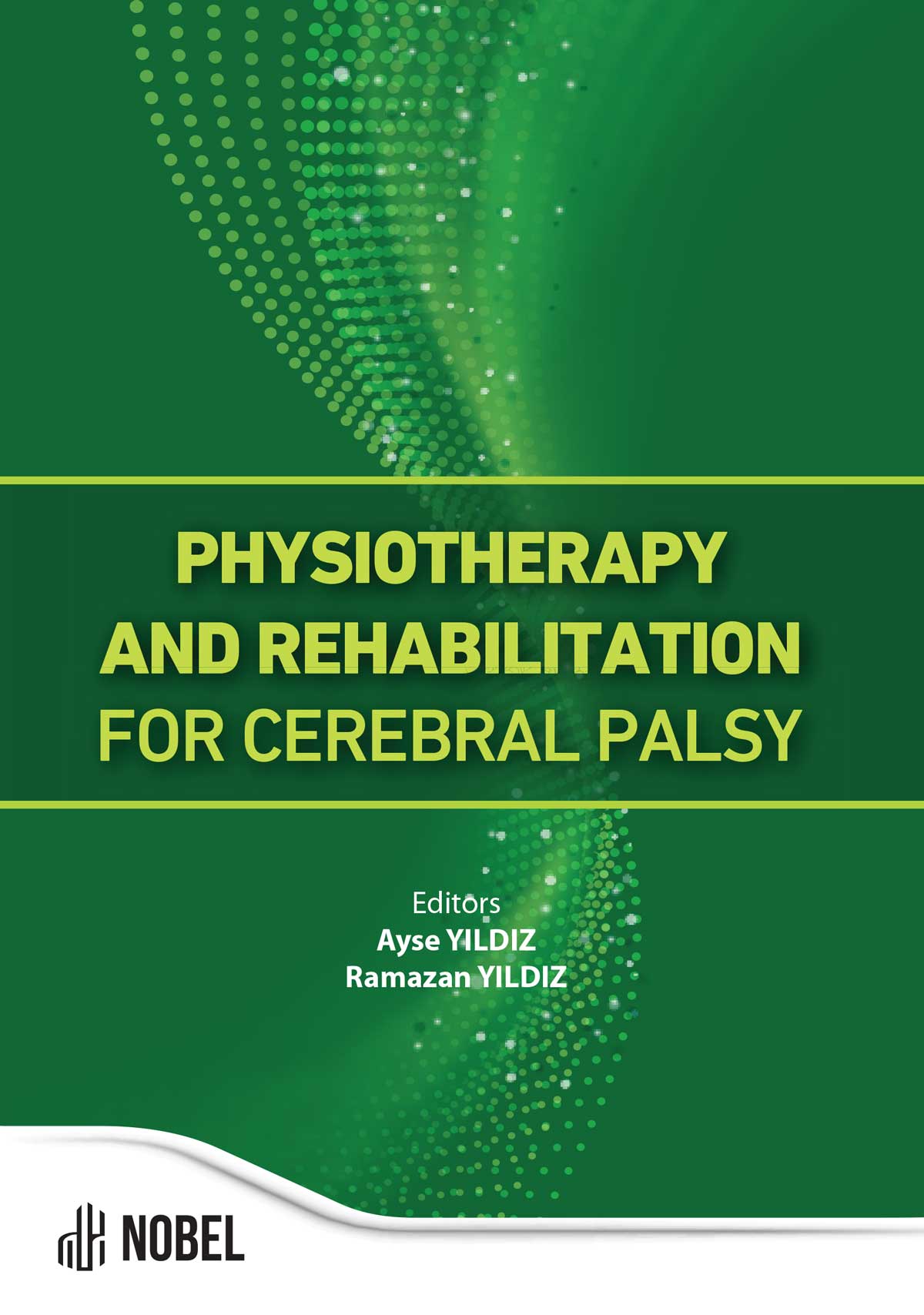Orthopedic Problems and Management in Cerebral Palsy
Musa Eymir (Author), Nilsah Yilmaz (Author)
Release Date: 2024-01-19
Orthopedic problems in cerebral palsy occur secondary to primary deficits. Primary deficits include impairment in position, abnormalities in muscle tone, imbalance and coordination disorders, decreased strength and loss of selective motor control. Secondary deficits include muscle contractures and bone deformities, leading to further motor dysfunction and the need for orthopedic surgery. Management of orthopaedic problems [...]
Media Type
PDF
Buy from
Price may vary by retailers
| Work Type | Book Chapter |
|---|---|
| Published in | Physiotherapy and Rehabilitation for Cerebral Palsy |
| First Page | 105 |
| Last Page | 123 |
| DOI | https://doi.org/10.69860/nobel.9786053358794.6 |
| ISBN | 978-605-335-879-4 (PDF) |
| Language | ENG |
| Page Count | 19 |
| Copyright Holder | Nobel Tıp Kitabevleri |
| License | https://nobelpub.com/publish-with-us/copyright-and-licensing |
Musa Eymir (Author)
Asst. Prof. Dr., Erzurum Technical University
https://orcid.org/0000-0002-9671-9583
3The author received his undergraduate degree in Physical Therapy and Rehabilitation at Hacettepe University 2008, his master’s degree in Orthopedic Physiotherapy at Dokuz Eylül University in 2016, and his doctorate from the Department of Physical Therapy and Rehabilitation at Dokuz Eylül University in 2021.
The author worked as a Physiotherapist at different Special Education and Rehabilitation centers from 2008 to 2014. He started to study in academia in 2014 and as a Research Assistant at the School of Physical Therapy and Rehabilitation at Dokuz Eylül University between 2014 and 2021. In June 2021, he started to study as a Research Assistant at the Department of Physical Therapy and Rehabilitation at Erzurum Technical University. By September 2021, he was promoted to Assistant Professor Doctor within the same university and department, where he continues his professional academic life.
Nilsah Yilmaz (Author)
M.Sc. PT, Tokat Gaziosmanpasa University
https://orcid.org/0000-0002-3044-3326
3The author worked as a Physiotherapist at different Special Education and Rehabilitation centers from 2014 to 2016. She started to study in academia in 2016 and as a Research Assistant at the School of Physical Therapy and Rehabilitation at Dokuz Eylül University between 2016 and 2020. In January 2020, she started to study as a Research Assistant at the Department of Physical Therapy and Rehabilitation at İzmir Kâtip Çelebi University. By July 2023, she was promoted to Assistant Professor Doctor within the same university and department, where she continues her professional academic life.
Azzam, A. M. (2012). Effect of hand function training on improvement of hand grip strength in hemiplegic cerebral palsy in children. J Nov Physiother, 2(116), 2.
Bilgili, F., Temelli, Y., & Akalan, N. E. (2012). Assessment of the hip and knee flexion contractures in cerebral palsy patients with crouch gait. JAREM. Journal of Academic Research in Medicine, 2(2), 33.
Dare, C. J., & Clarke, N. M. P. (2007). Proximal femoral osteotomy in childhood. Current Orthopaedics, 21(2), 115
Jackman, M., Sakzewski, L., Morgan, C., Boyd, R. N., Brennan, S. E., Langdon, K.,& Novak, I. (2022). Interventions to improve physical function for children and young people with cerebral palsy: international clinical practice guideline. Developmental Medicine & Child Neurology, 64(5), 536-549
Koch, A., Kasprzyk, M., Musielak, B., & Jóźwiak, M. (2024). Long-term outcomes of reconstructive treatment for painful dislocations in patients with cerebral palsy. Journal of Children’s Orthopaedics, 18632521241233165.
Kushchenko, O. (2018). Effect of ergotherapy on the level of self-care of children with cerebral palsy. Slobozhanskyi herald of science and sport, (3 (65)), 26-31.
Miller, D. J., Flynn, J. J. M., Pasha, S., Yaszay, B., Parent, S., Asghar, J., ... & Cahill, P. J. (2020). Improving health-related quality of life for patients with nonambulatory cerebral palsy: who stands to gain from scoliosis surgery?. Journal of Pediatric Orthopaedics, 40(3), e186-e192
Miller, F. (2005). Cerebral palsy. Springer Science & Business Media.
Miller, F. (2007). Spinal deformity secondary to impaired neurologic control. JBJS, 89(suppl_1), 143-147
Miller, F. (2020). Knee Flexion Deformity in Cerebral Palsy. In:
Miller, F. (2020). Spinal deformity in children with cerebral palsy: An overview. Cerebral Palsy, 1701-1710.
Mosca, V. S. (2014). Principles and management of pediatric foot and ankle deformities and malformations. Lippincott Williams & Wilkins
Mutch LW, Alberman E, Hagberg B, Kodama K, Velickovic MV.(1992) Cerebral palsy epidemiology: where are we now and where are we going? Dev Med Child Neurol 34:547–55.
Novacheck, T. F., Stout, J. L., & Tervo, R. (2000). Reliability and validity of the Gillette Functional Assessment Questionnaire as an outcome measure in children with walking disabilities. Journal of pediatric orthopedics, 20(1), 75–81
Shore BJ, Thomason P, Reid SM, Shrader MW, Graham HK. (2020) Cerebral palsy. In: JM Flynn, S Weinstein, eds. Lovell and Winter’s Pediatric Orthopaedics, 8th edn. Philadelphia, PA: Lippincott Williams & Wilkins; 509–90
Trost, J. P. (2009). Clinical evaluation. The Identification and Treatment of Gait Problems in Cerebral Palsy, 180
| onix_3.0::thoth | Thoth ONIX 3.0 |
|---|---|
| onix_3.0::project_muse | Project MUSE ONIX 3.0 |
| onix_3.0::oapen | OAPEN ONIX 3.0 |
| onix_3.0::jstor | JSTOR ONIX 3.0 |
| onix_3.0::google_books | Google Books ONIX 3.0 |
| onix_3.0::overdrive | OverDrive ONIX 3.0 |
| onix_2.1::ebsco_host | EBSCO Host ONIX 2.1 |
| csv::thoth | Thoth CSV |
| json::thoth | Thoth JSON |
| kbart::oclc | OCLC KBART |
| bibtex::thoth | Thoth BibTeX |
| doideposit::crossref | CrossRef DOI deposit |
| onix_2.1::proquest_ebrary | ProQuest Ebrary ONIX 2.1 |
| marc21record::thoth | Thoth MARC 21 Record |
| marc21markup::thoth | Thoth MARC 21 Markup |
| marc21xml::thoth | Thoth MARC 21 XML |

